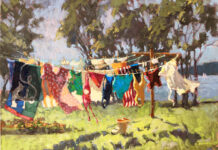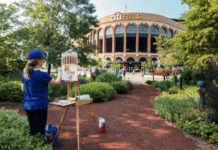The following landscape painting demonstration is by Trey Finney, whose work stresses high contrast and a high key.
Landscape Painting Demo: Building and Taking Away
Step 1: Trey Finney usually tones his canvases, but not a deep tone. In fact, his canvas at this stage often looks like a Cy Twombly painting nearly completed, although he doesn’t think along those lines.
“There’s no rhyme or reason to it,” he says. “That green at the bottom of this piece? I knew I would paint over it.” He was just trying to modulate the white of the surface to make it easier to judge value.
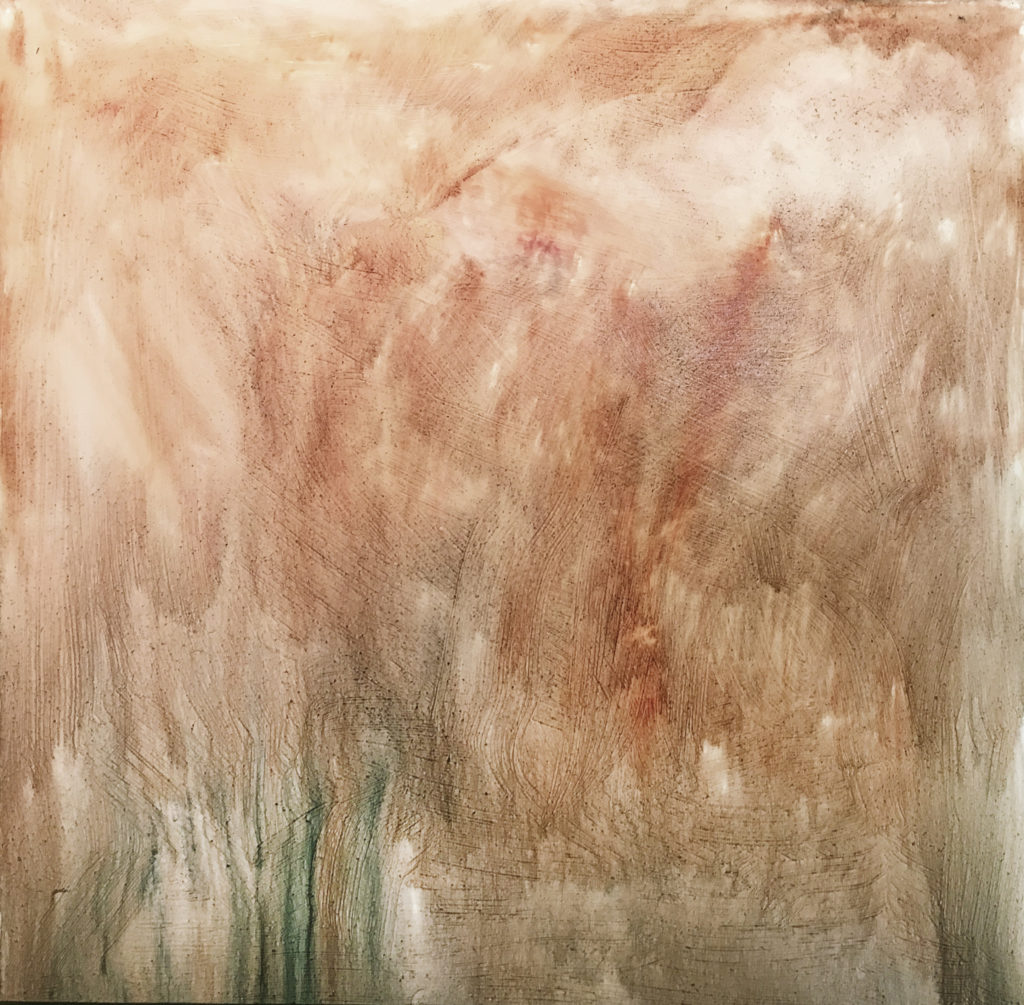
Step 2: He then blocked in his subject. By the end of this step, he pretty much had the final values and main shapes in place.
“This stage served to establish my map for values,” he says. “I was also looking to see if the composition would be balanced. In this case, I planned on placing the barn right in the middle of the composition, so I had to ask myself if I was going to be able to balance it with other shapes without the composition becoming too symmetrical.” He proceeded boldly, willing to scrap the composition if it wasn’t working. “It was just 15 to 20 minutes lost if I had to start over.”
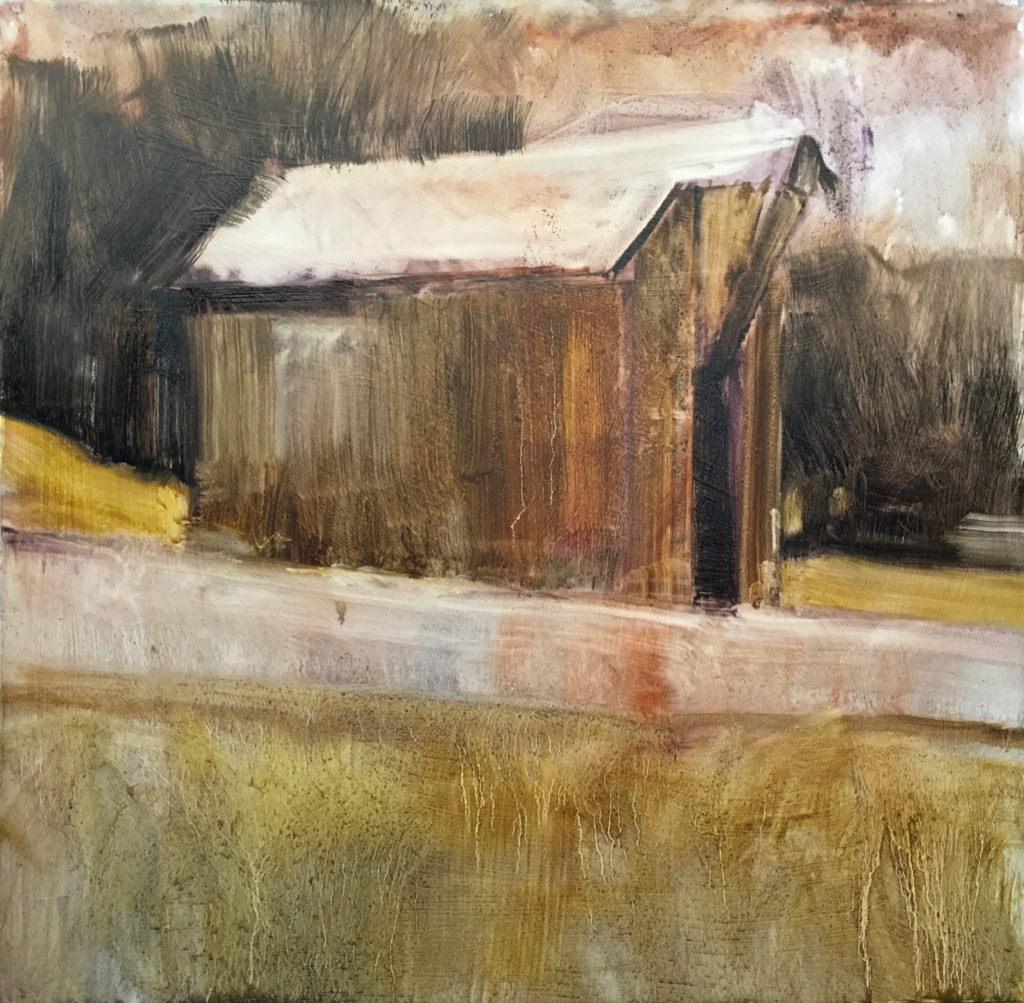
Step 3: The next stage was dedicated to local colors and how they related to one another. In particular, Finney was interested in the light blue of the barn and the spring green of the grass.
“Color-wise, I may have pushed the greens a little bit, but in this stage I was mostly going for what was there,” he says. The trees in the upper left helped balance out the abstract shapes of the roof and sky — two elements that are close in value.
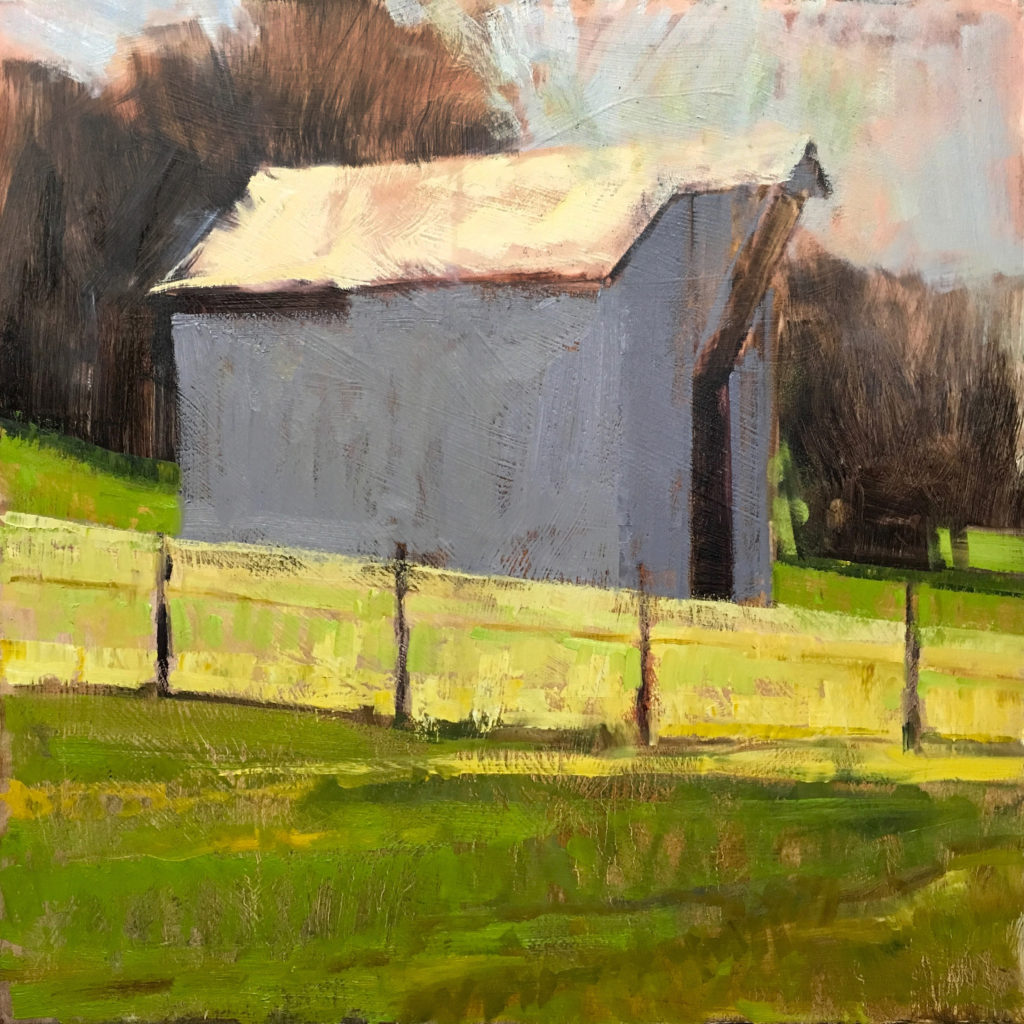
Step 4: The artist then scraped back a fair amount of what he had put down, in particular the fence posts, which he would restate more subtly later.
“There’s something to be said for messing up what you have already put in,” he says. “Start thin so that you can scrape and blend. It’s not a coloring book; I’m making a painting, and I’m the one who decides what goes in.” He’s in good company with this line of thinking. “Sargent would scrape off most of what he painted and do it again.”
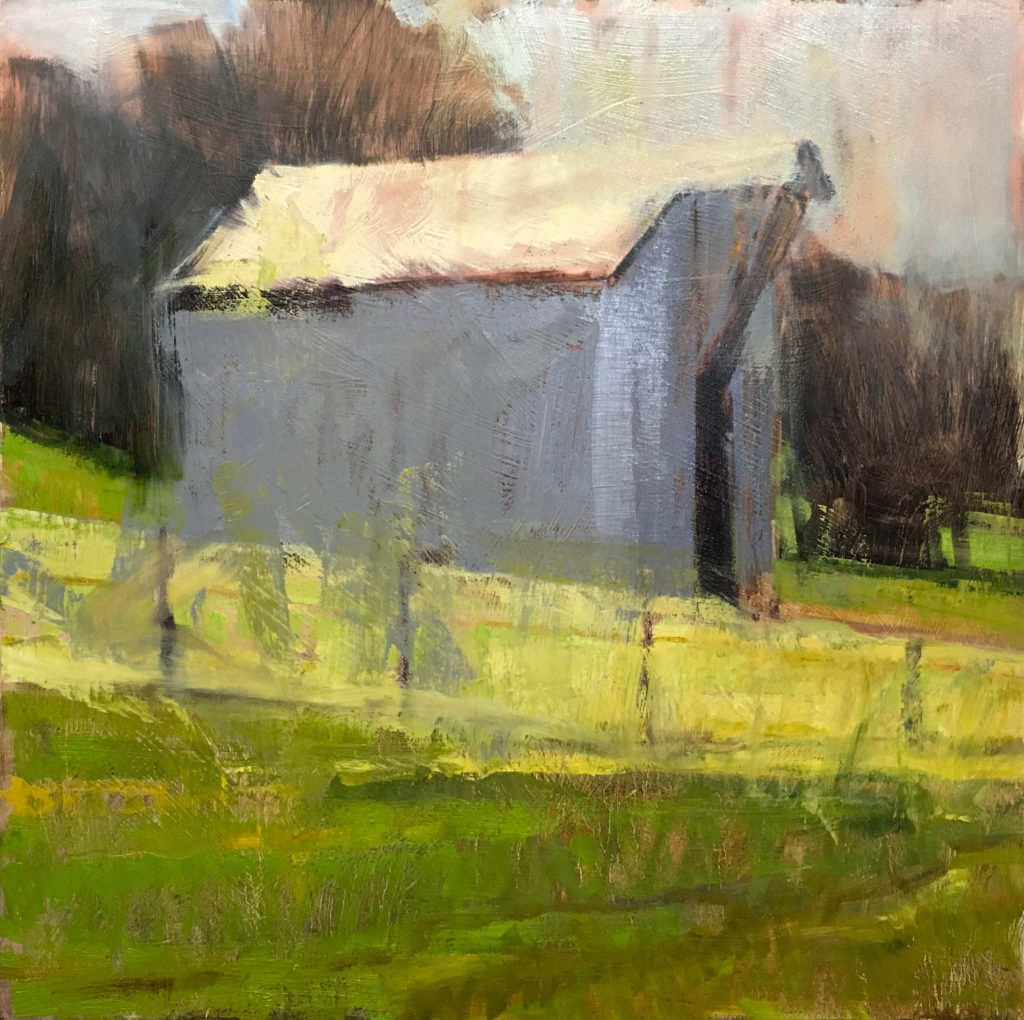
Step 5: When Finney pulled the roof and sky colors closer together to create a stronger design, some of the light blue of the barn made its way into the sky. Thus, the sky turned yellow.
“If the value is right, it can be any color,” he points out. “I wanted some of the blue of the barn in the ground plane, and some of the yellow of the grass in the sky. For me, this makes the painting more harmonious, color-wise.” He also restated the fence posts at this point.
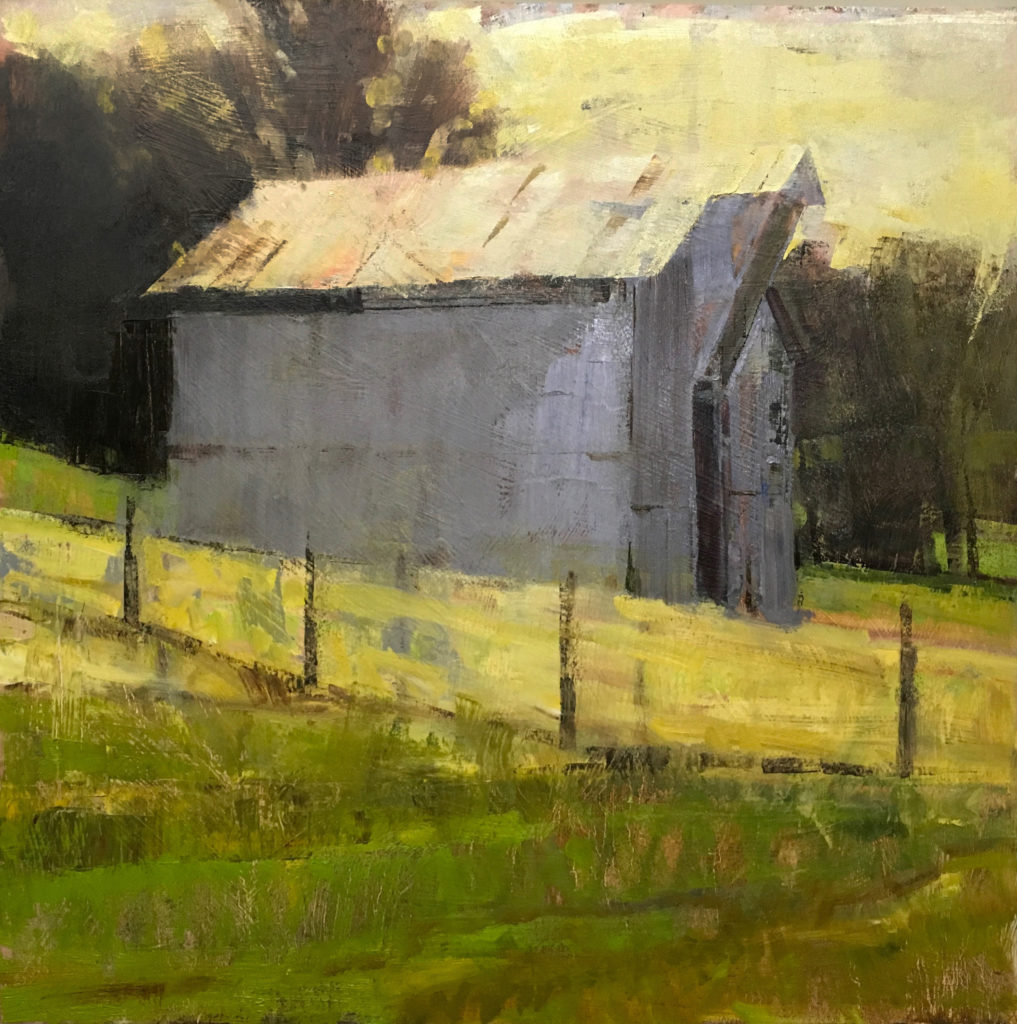
Final Step: To wrap things up, Finney added a few details, more darks in the foreground, and some blues in the grass.
“I played with the tree behind the barn,” he says. “There’s not much rendering in any of the trees; I tried to keep the darks as an anchor for what’s going on in the light. I also added some negative shapes in the background, with the grass color.”
How does he know when the painting is complete? “I paint until I start making marks that make me go, ‘Oh. No, no, no.’ That’s when I stop. I fix the problem and stop painting. Otherwise, I could keep fooling with it endlessly.”
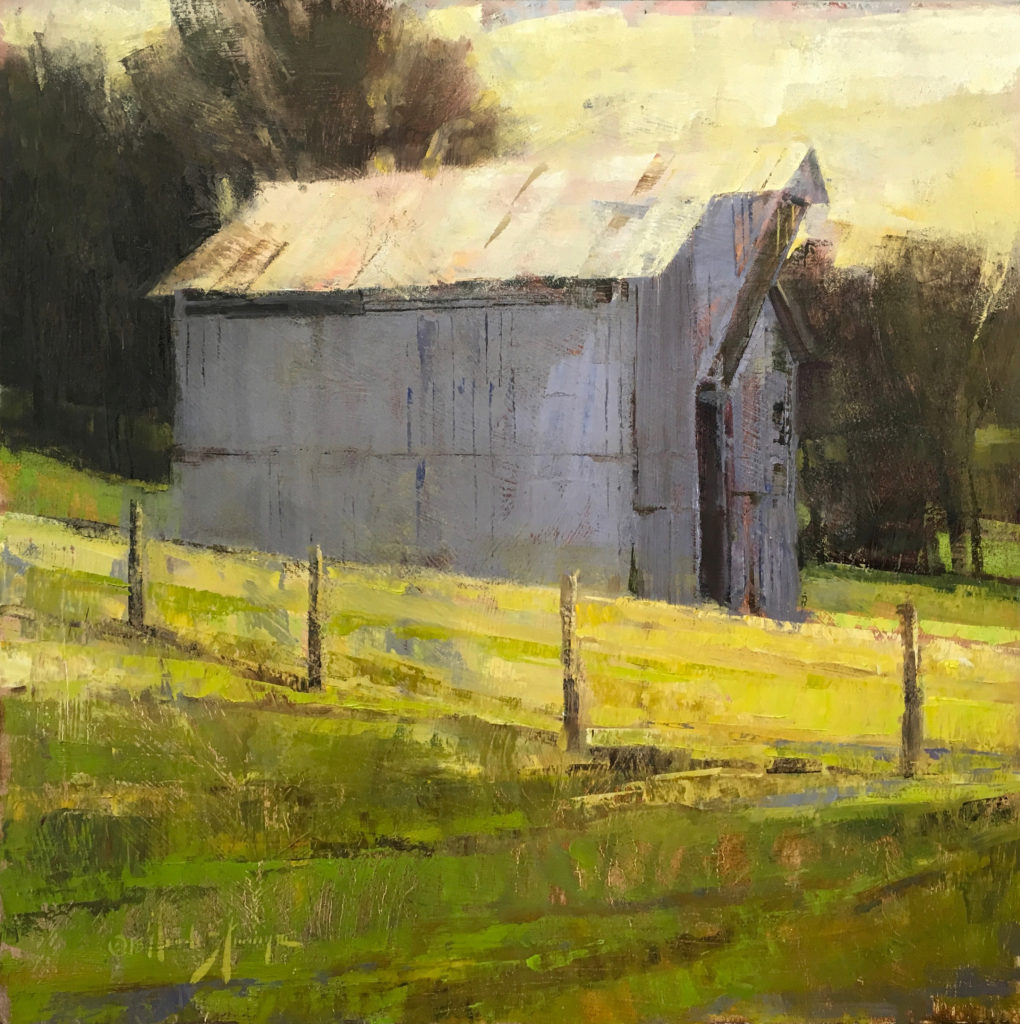
Connect with Trey Finney at treyfinney.com.
Related > Read the accompanying feature article, “Create Chroma Without Going Garish,” at OutdoorPainter.com.
Visit EricRhoads.com to find out all the amazing opportunities for artists through Streamline Publishing, including:
– Online art conferences such as Plein Air Live
– New video workshops for artists
– Incredible art retreats
– Educational and fun art conventions, and much more.
> Subscribe to Plein Air Today, a free newsletter for artists
> Subscribe to PleinAir Magazine so you never miss an issue


